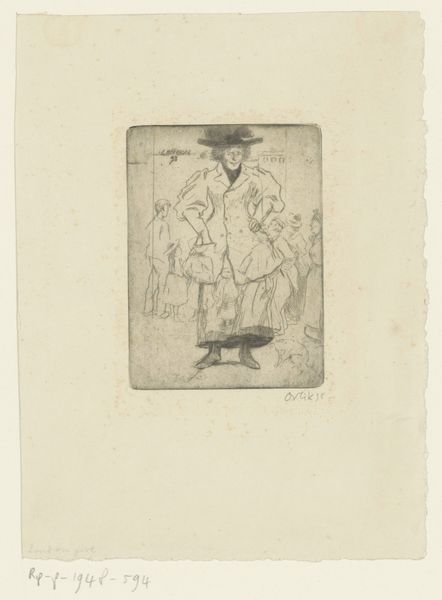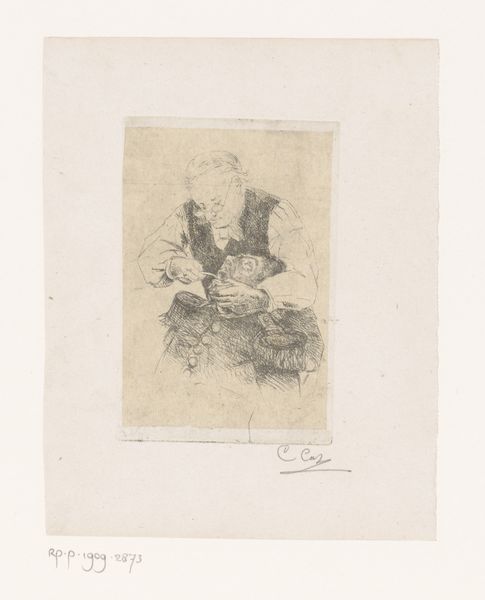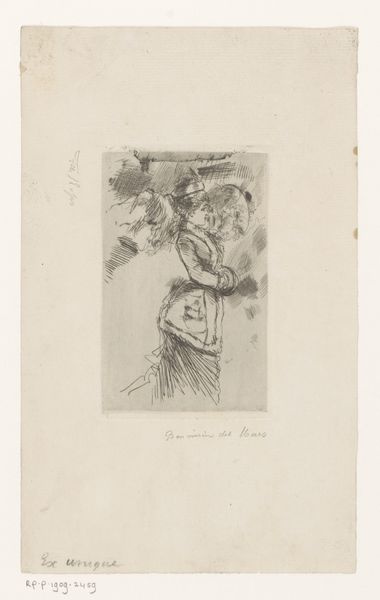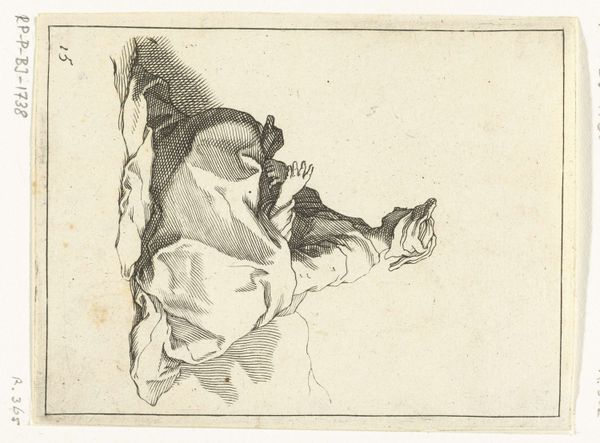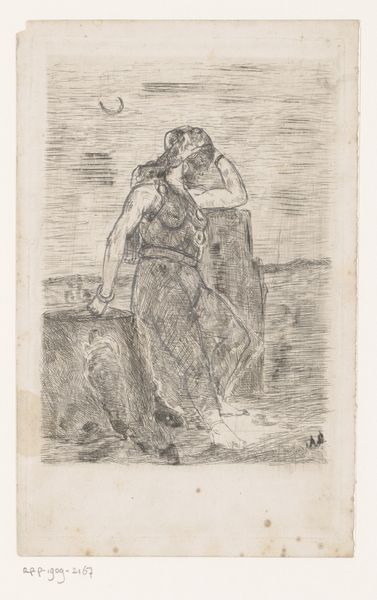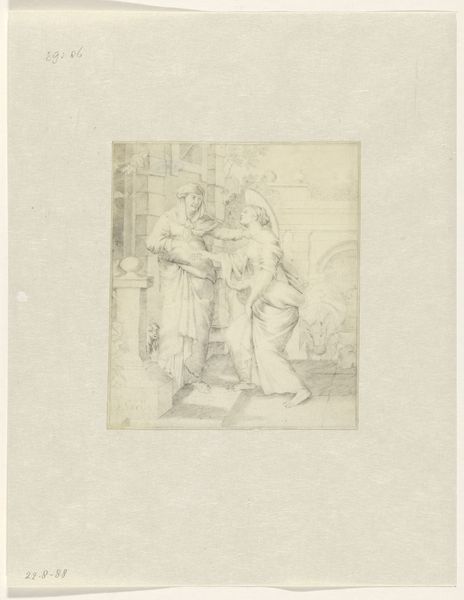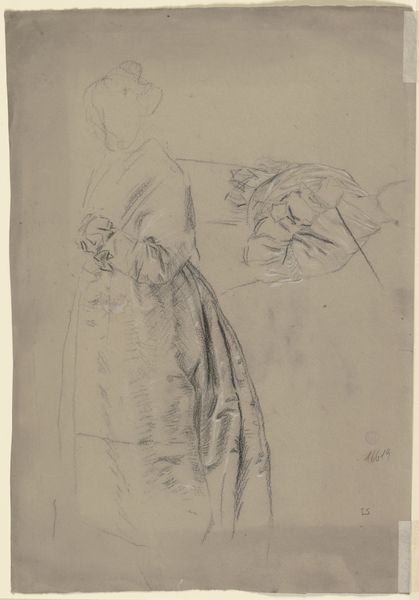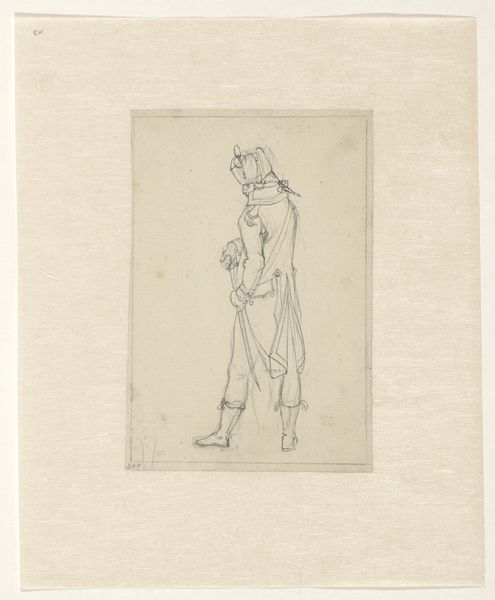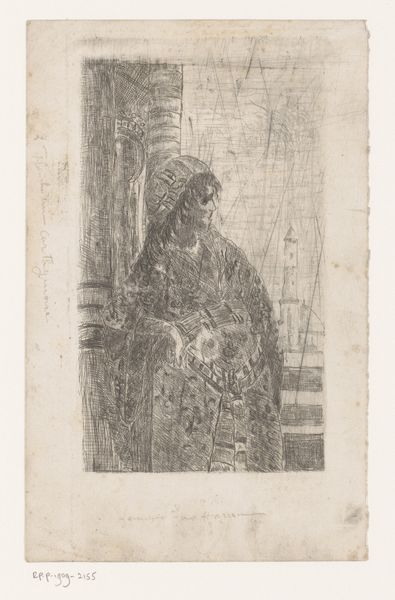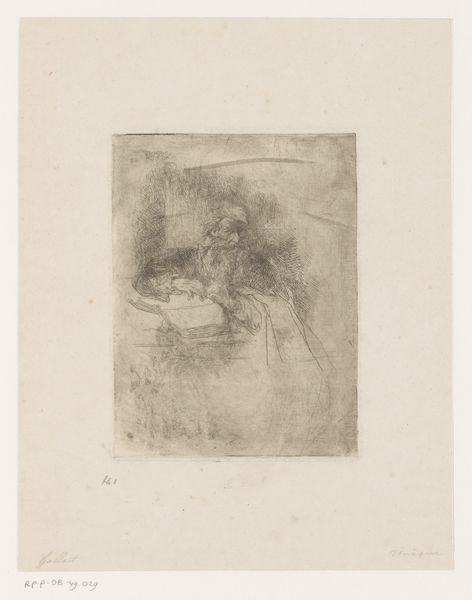
Twee staande figuren, de armen om elkaar heen geslagen, op de rug gezien 1865 - 1930
0:00
0:00
Copyright: Rijks Museum: Open Domain
Editor: Here we have Jac van Looij’s “Two Standing Figures, Arms Around Each Other, Seen from the Back,” likely created sometime between 1865 and 1930. It’s a pencil drawing, and the sketchiness almost gives it an intimate, vulnerable feel. What strikes you most about this piece? Curator: What immediately grabs my attention is the question of audience. Given its seeming informality, the use of pencil, and the type of paper, this could very well be a preparatory drawing for something larger, perhaps a painting that addresses societal ideas of companionship. What kind of narratives were considered suitable for public display? Or was it simply a private study? Editor: That’s a good point! I hadn't considered the intended viewership. Could the way they're embracing tell us something about social conventions of the time? Curator: Precisely. Notice how the figures, while physically connected, remain somewhat indistinct, their faces hidden. What did it *mean* to show affection publicly? Was van Looij commenting on restrictions, or celebrating newfound freedoms? Think about the rise of urban spaces and anonymity, where different kinds of social interactions began to take shape. Was this a reflection on evolving notions of public versus private behavior? Editor: So you’re saying the drawing is perhaps more than just a study of figures, but also a record of changing social mores? Curator: Exactly. And, by presenting these figures from the back, van Looij avoids any explicit individualization, focusing instead on the act of embracing itself. Consider what embrace, especially same-sex embrace, could symbolize in the various decades the work might have been created, both publicly and within the art world. Editor: That is so insightful. I hadn’t thought about it that way. Now I see how much the context can change our understanding. Curator: Yes. Looking at art isn't just appreciating aesthetics; it's like looking through a window into the past, reflecting the culture, politics, and daily lives of people then and now.
Comments
No comments
Be the first to comment and join the conversation on the ultimate creative platform.
